Electric Cities of Georgia Members Enter Solar Power Supply Agreement With Walmart
November 23, 2021
by Paul Ciampoli
APPA News Director
November 23, 2021
Electric Cities of Georgia (ECG) has worked with Walmart to secure a renewable energy customer agreement with 14 ECG members that will supply 26 megawatts (MW) of utility-scale solar power to Walmart facilities in their territories.
ECG, which is based in Atlanta, Ga., is a non-profit organization providing strategic and technical services to 52 public power communities with utility operations.
The agreement follows discussions between ECG and Walmart on how Walmart could work toward its renewable energy commitment by purchasing energy from a qualified renewable solar facility, ECG noted on Nov. 19.
During this process, several ECG members met with their council and board members to agree to the terms and discuss the benefits of this initiative.
ECG noted that in an article published by the American Public Power Association (APPA) in December 2020, Patrick Bowie, Utility Director for the City of LaGrange, Ga., said that buying renewable solar power through the city allows Walmart to realize better prices and keeps revenues from one of the city’s largest customers in the local economy.
The 26 MW commitment will be supplied by an 80 MW utility-scale solar project that is being finalized and expected to produce electricity by December 2023.
ECG said that in order to continue building a better working relationship and show appreciation for the recent solar renewable energy project, the Walmart corporate energy services team met in the City of LaGrange in October with ECG staff and several ECG member communities that serve Walmart facilities.
During the meeting, John Giles, ECG CEO, thanked all the parties that worked on the solar initiative for their diligence in seeing the effort to completion.
“ECG members are thankful to Walmart for jobs, investments, and providing products and services in our communities. This meeting was another significant step to an excellent working relationship,” ECG said.
ECG’s services include aggregated services, analytical services, economic and community development, engineering and energy services, hosted solutions, joint purchasing, legislative and regulatory, member training, pole attachment services, and training and safety.
Seven States Power Partners With Chattanooga, Knoxville On Green Energy Initiatives
November 23, 2021
by Peter Maloney
APPA News
November 23, 2021
Seven States Power is helping two public power utilities in eastern Tennessee expand the green energy options available to their customers.
In Chattanooga, EPB – formerly the Electric Power Board of Chattanooga – has joined forces with Seven States Power and Rock City to build a solar arbor designed to reduce energy consumption and enhance educational opportunities at the tourist attraction. The solar panels were installed on a plant arbor the partners built and will help power the ticket booth at Rock City. The “solar garden arbor,” which was constructed by Lightwave Solar, will generate about 16,800 kilowatt hours (kWh) of renewable energy per year.
Seven States Power is an energy solutions cooperative that is owned and operated by 153 local power companies across the seven states of the Tennessee Valley.
Further east in Tennessee, Knoxville Utilities Board (KUB) and Seven States Power partnered with the University of Tennessee, Knoxville, on the installation of a new electric vehicle charging station.
The single ChargePoint station features two charging ports and is in a staff parking lot, a location evaluated and chosen by students at the University of Tennessee’s Heath Integrated Business and Engineering Program (Heath IBEP).
Charging at the location will be available for $1 per hour for the first four hours, with the rate increasing to $2 per hour after that. The cost to charge a vehicle at the station comes to between two-to-three cents per mile compared with between 12 and 14 cents per mile for an average gas engine, the partners said.
The installation is the 24th electric vehicle charger on campus, but the only networked charger that offers the university real-time data for analysis. The Heath IBEP students plan to use data from the charger to assess whether or not current chargers need to be upgraded or replaced with smart chargers, monitor and give feedback on revenue as needed, and provide other educational opportunities.
Knoxville Utilities Board promotes electric vehicle use through its EV Charger Rebate Program, as well as through the adoption of Tennessee Valley Authority’s EV charger wholesale rate. “We’re proud to support the adoption of EVs throughout our service territory,” Gabriel Bolas, KUB president and CEO, said in a statement.
For Seven States, the new installation gives the cooperative more than 100 installations across the Tennessee Valley in less than three years.
Residential Utility Customer Assistance Funded with Coronavirus Relief Funds Not Taxable: IRS
November 23, 2021
by Paul Ciampoli
APPA News Director
November 23, 2021
The Internal Revenue Service (IRS) has released guidance indicating that residential utility assistance funded through the Coronavirus State and Local Fiscal Recovery Fund (CSLFRF) will not need to be reported as income.
Likewise, utility companies providing residential utility assistance funded through CSLFRF do not need to file a Form 1099 or other information to report such assistance, the IRS announced on Nov. 17.
Issued in the form of a “Frequently Asked Questions” (FAQ) list, the guidance will allow state, local, and utility programs funded with CSLFRF without fear of facing taxes on the value of that assistance later.
It also means that granting agencies and utilities do not need to prepare to issue information returns to the IRS detailing relief provided to residential customers. The guidance does not cover assistance provided to commercial customers.
For additional details, click here.
In October 2021, 21 U.S. House members from California and both of California’s senators sent a letter to the agency asking the IRS to clarify the issue.
In September, a similar letter was sent to by the American Public Power Association, the California Municipal Utilities Association and 15 national organizations representing water, gas, and electric utilities; consumer groups; energy assistance groups; cities; counties; and state and local financial officers.
Nominations Sought To Fill Opening On Electricity Subsector Coordinating Council
November 22, 2021
by Paul Ciampoli
APPA News Director
November 22, 2021
Nominations are being sought to fill a vacancy on the Electricity Subsector Coordinating Council (ESCC) with the resignation of Gil Quiniones.
Nominations are due by December 3, 2021 and the form to nominate individuals for the position can be found at this link.
The New York Power Authority (NYPA) announced on Oct. 14 that Quiniones had resigned as NYPA’s President and Chief Executive Officer to accept a position as CEO at Illinois-based Commonwealth Edison Company, a subsidiary of investor-owned Exelon Corp.
The guidelines used by members of the American Public Power Association ESCC Nominating Committee in the evaluation of candidates are available at this link.
The ESCC was established to serve as a strategic liaison between the electric power industry and the federal government related to the preparation and response to national-level disasters or threats to critical infrastructure.
Texas Power Plant Sends Emissions Free Electricity To The Grid From A Gas Plant
November 22, 2021
by Peter Maloney
APPA News
November 22, 2021
A zero emissions natural gas-fired power plant last week, for the first time, contributed electric power to the Electric Reliability Council of Texas (ERCOT) grid.
The power comes from NET Power’s 50-megawatt (MW) test facility in La Porte, Texas. NET Power’s technology mixes natural gas with oxygen, rather than air from the atmosphere, allowing the gas to burn more efficiently and at higher temperature and with fewer emissions.
Combustion releases carbon dioxide (CO2) that is captured under pressure as supercritical CO2 that is then is used to propel the plant’s turbine. After the CO2 leaves the turbine, it is stripped of water and either captured for sale for industrial processes or is piped back to be reused in the plant’s combustor.
NET Power is co-owned by Exelon Generation, McDermott International, 8 Rivers Capital, and Oxy Low Carbon Ventures (OLCV), a subsidiary of energy company Occidental.
NET Power, based in Durham, North Carolina, says it is working with “multiple clients worldwide” to develop utility-scale NET Power plants, with initial projects aiming to come online “in the next five years.” All the CO2 by its commercial power plants will be either utilized or permanently stored, the company said.
NET Power plants produce only electricity, water, and pipeline ready CO2, while “operating at high-efficiency, comparable to conventional power plants,” the company says.
NET Power does not manufacture its own equipment. It licenses its processes to other companies. Toshiba supplied the combustor and turbine for the La Porte test facility and was a partner in the demonstration project.
NET Power is working on deploying commercial scale versions of technology with a recently announced 300-MW project in Alberta, Canada, and four other projects under development in the United States and the United Kingdom.
Grid Security Exercise Wraps Up With Strong Public Power Participation
November 22, 2021
by Paul Ciampoli
APPA News Director
November 22, 2021
The North American Electric Reliability Corporation’s (NERC) last week wrapped up its grid security exercise, GridEx VI, with a large number of public power utilities participating in the exercise.
Over two days, more than 700 planners led their organizations’ efforts to exercise their response and recovery plans in the face of simulated, coordinated cyber and physical attacks on the North American bulk power system and other critical infrastructure.
This year, GridEx participants expanded to include more representation from public power, co-op and municipal entities, Canadian partners and other critical infrastructure sectors, such as natural gas, original equipment manufacturers, financial services, and telecommunications, NERC said. Approximately 60 public power utilities participated.
Hosted every two years by NERC’s Electric Information Sharing and Analysis Center (E-ISAC), GridEx is the largest grid security exercise in North America.
GridEx is “designed for utilities and government stakeholders to both exercise their response and recovery plans as well as to grease the skids for collaboration efforts during a massive cyber and physical security event that we hold in a simulated environment,” said Jim Robb, president and CEO of NERC, in a roundtable with media on Nov. 18.
“Of course, since we last held GridEx in 2019, the threat environment has changed significantly,” he said. “In addition to dealing with the pandemic, many entities have had to implement response and recovery plans in the face of actual cyber and physical attacks,” Robb said.
“This is our sixth GridEx and we’re very pleased this year that we’ve seen increased interest and participation” from public power utilities, among others, “despite the strains of the pandemic,” he said.
Kevin Wailes, administrator and CEO of Nebraska public power utility Lincoln Electric System and ESCC co-chair, said that “when we go through this process, it’s not just this event that we are preparing for, but it’s those that we have actually experienced, even this year.”
By way of example, he pointed to Hurricane Ida. “This same group of people, to a large extent,” played roles in helping to respond to the hurricane, Wailes noted.
Wailes discussed GridEx during a recent appearance on the American Public Power Association’s Public Power Now podcast.
The exercise concluded with an invitation-only executive tabletop session, which brought together industry and government executives to focus on strategic and policy-level issues raised during the exercise.
Robb noted that the tabletop exercise participants include executives from the electricity, natural gas, telecommunications and financial services industries, the Electricity Subsector Coordinating Council (ESCC) and senior federal government officials from the Department of Homeland Security and the Department of Energy (DOE), among others, “as well as our Canadian partners.”
Following GridEx VI, the E-ISAC will develop a public report on the exercise with input from all participants. The report is scheduled to be released in March 2022.
Since the last GridEx in 2019, the cyber security landscape has continued to evolve, guided by geopolitical events, new vulnerabilities, changes in technologies, and increasingly bold cyber criminals and hackers, NERC said.
Lessons learned from GridEx over the years include tangible recommendations for entities as well as industry-wide insights leading to strengthened crisis communication procedures across the industry such as the development of the cyber mutual assistance program, which has proven to be a critical resource, NERC said.
LADWP Pays Tribute To Line Worker Michael Lemestre Who Passed Away In Line Of Duty
November 19, 2021
by Paul Ciampoli
APPA News Director
November 19, 2021
The Los Angeles Department of Water and Power (LADWP) on Nov. 18 paid tribute to Michael Lemestre, a fallen member of LADWP’s Power System team, with a five-minute departmentwide “Stand Down.”
All work was halted departmentwide to honor Lemestre, who recently died in the line of duty. The Board of Water and Power Commissioners held a special meeting to observe the Stand Down, in solidarity with LADWP employees and labor partners.
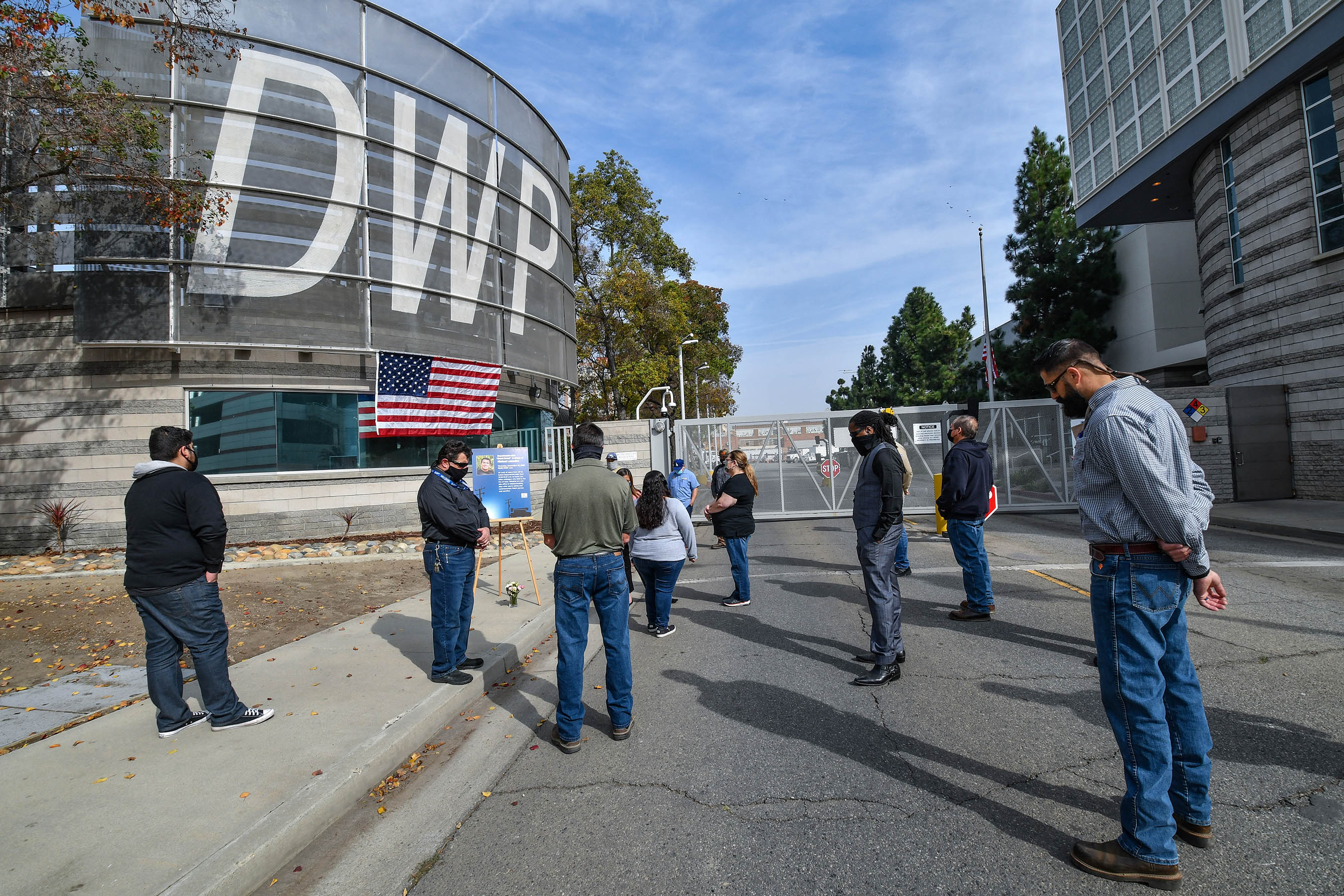
Lemestre died on Nov. 4, 2021 as a result of injuries sustained when he came in contact with an energized circuit in an underground vault.
“Mike’s sacrifice weighs heavily on many in the department because it reminds us of the very real hazards of the work that many LADWP employees, especially those out in the field, perform each day,” Board President Cynthia McClain-Hill shared during the special meeting, adding, “When tragic accidents like the one that took Mike’s life happen, we know the life of their loved ones and their coworkers will be forever changed. Though this loss is difficult and painful, the LADWP family has come together today to show our respect for one of our own and to show our support for Mike’s family.”
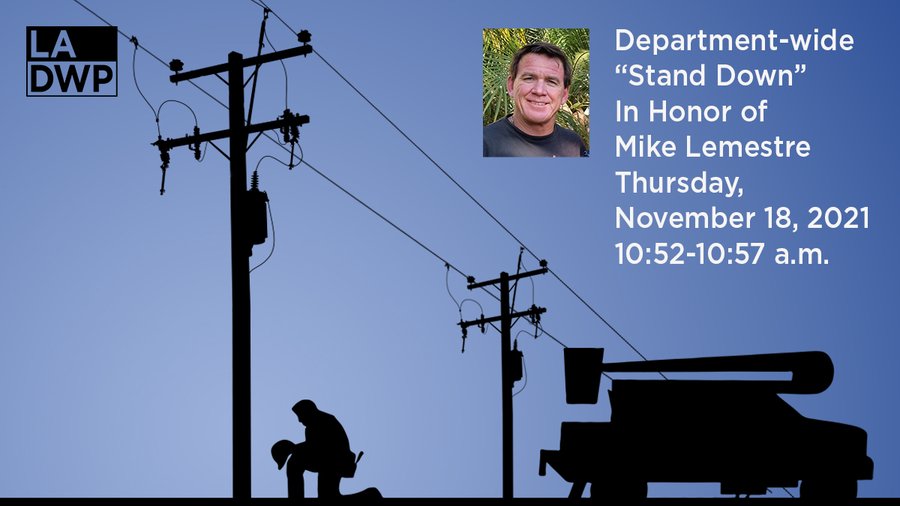
He was working as part of a cable splicing crew performing electrical service work at Terminal Island in Los Angeles. His co-workers pulled him from the vault and heroically tried to revive him by performing CPR, until the Los Angeles Fire Department arrived at the scene. Paramedics transported him to the hospital but unfortunately, he did not survive.
A tribute from LADWP workers for Lemestre is available at: LADWP Stand Down.
LADWP General Manager and Chief Engineer Martin Adams directed all LADWP employees to stop work at all job locations for five minutes and think of Lemestre and other line workers who have died in the line of duty, performing work in service of the city and its residents.
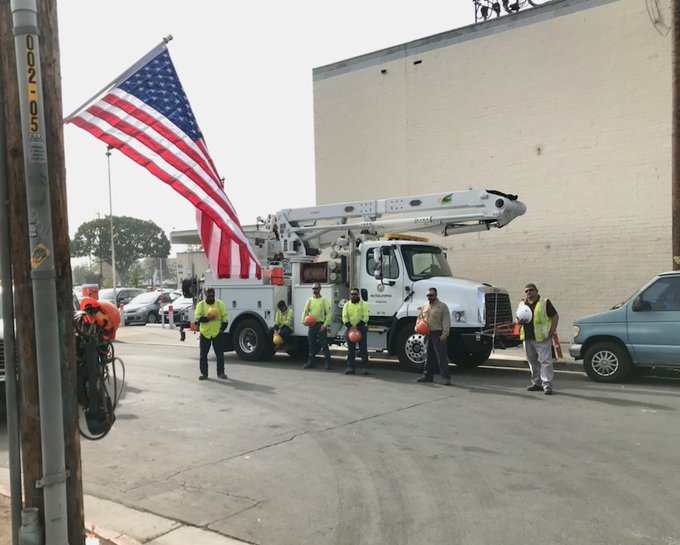
During this time, employees were also asked to reflect on the importance of the vital and hazardous work that many LADWP workers perform every day.
“Mike’s loss weighs heavily on all of us,” Adams said. “Safety is very important to LADWP, and losing one of our own is a jarring reminder of the reality of the nature of our work. I would like our customers and stakeholders to know that this department is rich in committed, talented and dedicated public servants who are unsung heroes performing dangerous work to serve our city every day, keeping the lights on and the water flowing. We are very proud of them. But make no mistake, no task is and ever will be more important to this work family than our employees’ safety, no matter how committed we are to our service of this City.”
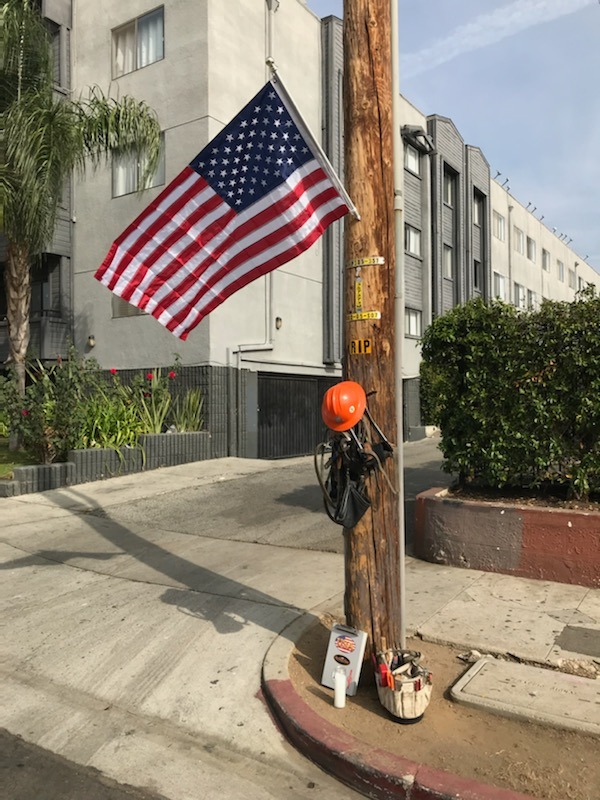
At a work location near Figueroa Street and Avenue 51, LADWP crews that work on overhead power lines paused their work, removed their hard hats, and bowed their heads to remember their fallen colleague. Nearby was a makeshift memorial for Mike with an American flag and Mike’s hard hat, hung on a power pole.
An LADWP water system trunk Line construction crew performing work at Robinson and Council Streets stood down in solidarity with their power system colleagues to pay tribute to Mike. LADWP crew members performing work as far away as the Navajo Nation in the desert southwest, and in Nevada and Arizona, observed the “Stand Down” as well.
Lemestre was a 16-year veteran of the Department who joined LADWP on September 6, 2005 as an Electrical Craft Helper for the Power Transmission & Distribution Division. He then worked as an Electric Distribution Mechanic Trainee and Electric Distribution Mechanic. Lemestre had been recently promoted to Senior Cable Splicer on June 7, 2021.

The Stand Down was preceded and followed by remarks from the Board of Water and Power Commissioners, executive management, leadership from IBEW Local 18, and Lemestre’s friends and family.
“Like thousands of IBEW members, Michael came to work each and every day in order to provide an essential service to this city, which for the most part goes unnoticed until the power goes off or the water stops flowing,” said Gus Corona, IBEW Local 18 Senior Assistant Business Manager and President. “November 4 was supposed to be just one of those days but instead, it became a grim reminder of how unforgiving this work can be.”
“For those that knew Michael best, they would describe him as a kindhearted, hardworking family man. A good man. Michael truly was a good man,” said Brian Wilbur, LADWP Deputy Senior Assistant General Manager of Power System Construction, Maintenance, & Operations. “We knew we could always count on him to take the job seriously, and to step up and do everything that was asked of him without question. He was reliable, steady, hardworking and above all a good man.”
Lemestre’s wife Michelle joined the special board meeting virtually and thanked the LADWP family for the support it has offered during this difficult time. “I have no words to express the gratitude we have and I just thank you so, so much for the love, care you have given us and the prayers. Mike is in heaven and I know he’s in a better place,” she said. “It’s all of us that have to deal with him being gone and that’s the hard part.”
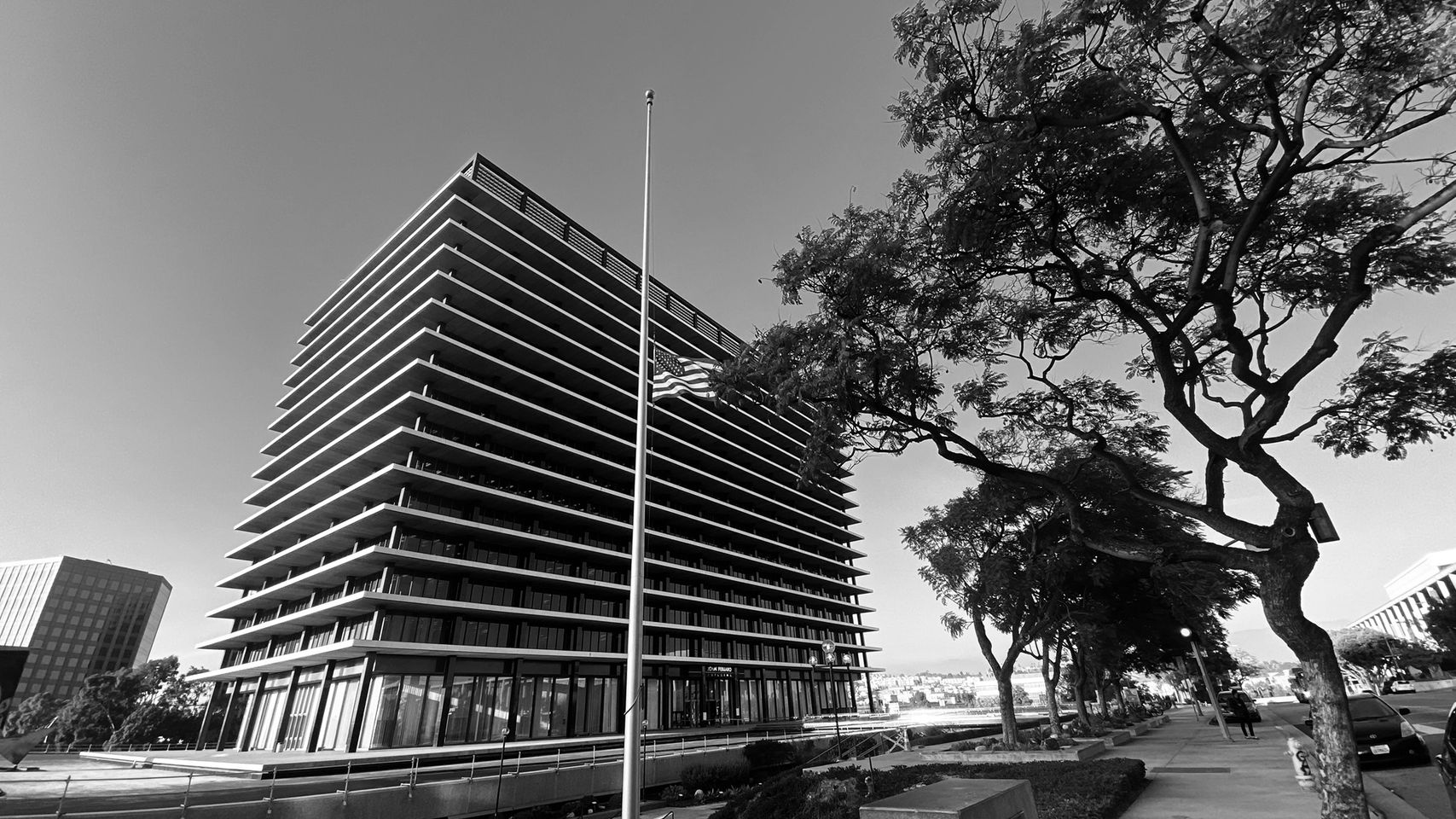
Mayor Eric Garcetti earlier this month ordered all U.S. flags at city facilities, including LADWP facilities, lowered to half-staff to recognize Lemestre’s sacrifice.
His family will hold funeral services and a celebration of Mike’s life shortly after the new year.
Reading Municipal Light Department Gets Green Light To Participate In Offshore Wind Bid
November 19, 2021
by Paul Ciampoli
APPA News Director
November 19, 2021
Reading Municipal Light Department’s (RMLD) Citizens’ Advisory Board (CAB) and Board of Commissioners approved RMLD’s participation in the Commonwealth Wind bid proposal for offshore wind that is under consideration by Massachusetts, RMLD reported on Nov. 19.
Announced in October, Commonwealth Wind is a first of its kind partnership between Vineyard Wind and Energy New England (ENE), which is representing 20 participating Massachusetts Municipal Light Plants (MLPs), including RMLD. It is the first time MLPs were allowed to bid for Massachusetts offshore wind power.
If awarded, the Commonwealth Wind portion will be a part of the larger Vineyard Wind project proposed in an area 22 miles south of Martha’s Vineyard that was designated by the federal government in 2015 following a multi-year stakeholder process.
The Commonwealth Wind bid proposal is for 25 megawatts — or 146,000 megawatt hours per year (the maximum available to the MLPs) — plus the associated non-carbon certificates.
If the Commonwealth Wind bid is selected, RMLD’s share will represent less than 1% of its total annual power supply needs.
Massachusetts is managing the bid process and plans to announce bid winners by December 17.
“The RMLD envisions this first potential foot in the door as an opportunity for MLPs to gain more opportunities for future wind proposals to help meet decarbonization goals in the Climate Bill,” said Coleen O’Brien, RMLD General Manager.
RMLD is a municipal electric utility serving more than 70,000 residents in the towns of Reading, North Reading, Wilmington, and Lynnfield Center in Massachusetts. RMLD has over 30,000-meter connections within its service territory.
Understanding and Accessing Federal Funds Available to Public Power Utilities
November 18, 2021
by Guest Contributor for APPA
Mike Julian
Chief Revenue Officer, Tantalus
November 18, 2021
Public power utilities face pressures that require wholesale transformation. Extreme weather events occur with increasing frequency, stressing grids and causing destructive power outages. Consumers are transitioning to low-carbon, disruptive technologies such as renewables and electric vehicles. New regulatory requirements are charging utilities with reducing their environmental footprints, forcing the transition to smart grid solutions and fiber-to-the-home (FTTH) communications programs.
It’s an expansive—and expensive—transformation. But budgets are tight throughout the U.S. – where will the money for these long-term investments come from?
Federal Programs – New and Old
The recently passed Infrastructure Investment and Jobs Act is top of mind for many people in the utility industry, and it will invest billions in the sector. But even in a typical year, 1,000 federal grant programs, working through 26 federal agencies, provide a total of more than $400 billion to public agencies for investment in a wide variety of initiatives. Much of this annual funding can support smart grid solution projects, through programs such as:
- Federal Emergency Management Agency’s Building Resilient Infrastructure and Communities (BRIC) Grants ($1 billion)
- USDA Rural Utility Services Electric Program ($5.5 billion)
- HUD Community Development Block Grant Mitigation Program (variable)
Learn more about these programs
And in the past 18 months alone, three major pieces of legislation passed, providing $4.8 trillion in extraordinary funding for COVID response and economic stimulus, including:
- $288 million in Broadband Infrastructure Deployment grants through last December’s COVID Relief and Omnibus Spending bill
- $350 billion in American Rescue Plan Act direct allocations to states, cities, and counties for flexible infrastructure investments, including sustainable technology and smart grid solutions; $10 billion of this was for states, territories, and Tribes to cover the costs of capital projects like broadband infrastructure
- $175 billion in the Infrastructure Investment and Jobs Act to implement smart grid solutions that improve grid resiliency and expand broadband access, as well as an additional $7.5 billion towards EV infrastructure
To give you a sense of scale, the American Recovery and Reinvestment Act of 2009 was a $787 billion package that provided $7 billion for broadband deployment and $4.5 billion in smart grid investments. This new legislation surpasses the 2009 Act by an exponential factor.
How the Funds Are Distributed
For those utilities that want to access the federal resources available to them, it’s important to understand how these funds flow.
- Formula funds are distributed by the federal government to state and local governments based on population and other statistics. One example you may be familiar with is the Community Development Block Grant
- Competitive funds require the completion of an application in order to receive them, for example FEMA’s BRIC grant.
Many of these programs address a broad scope of grid infrastructure projects, but there are some that focus on increasing the availability of broadband services. Many utilities are developing broadband fiber networks to offer internet, phone and video directly to homes and businesses. They can then also leverage the network to improve their grid operations. These efforts often qualify for federal funding—utilities just need to know how to access it!
In order to access federal funding for a project, a utility must apply through the proper channels for the respective fund. Although the process for each available fund and their managing departments can be different, successful applicants for federal funding have some common characteristics:
- A use case that aligns with federal funding streams
- A local commitment to this effort
- The support of local government and non-government partners
- Data to support the request
- A history of solid stewardship of grant funding
- Engage the support of federal elected officials to advance the funding application
An understanding of the steps and requirements needed to secure funds is critical to a successful application.
The Bottom Line
There are federal funds available for many of the projects and investments that utilities are evaluating today. Many of these funds have deadlines for applications—now is the time to begin the process!
There are several organizations to help you identify and access federal funds:
- APPA has two related virtual courses:
- Tantalus’ Funding Solutions Page provides information on various opportunities and reviews utilities’ most frequently asked questions
We encourage everyone in the public power and electric cooperative utility space to explore the many ways federal funding can enable a transition towards a smarter, more resilient energy sector.
APPA Applauds FERC, NERC Efforts To Analyze Winter Cold Weather Event
November 17, 2021
by Paul Ciampoli
APPA News Director
November 17, 2021
The American Public Power Association (APPA) recently applauded the joint efforts of the Federal Energy Regulatory Commission (FERC), the North American Electric Reliability Corporation (NERC), and NERC’s Regional Entities to analyze the February 2021 cold weather event in Texas and the South-Central U.S.
“The event put grid reliability for millions of Americans at risk and left many utilities and their customers facing billions of dollars of additional costs they will be repaying for years to come,” wrote Joy Ditto, President and CEO of APPA, in a letter to FERC Chairman Richard Glick and NERC President and CEO James Robb.
The detailed analysis by FERC and NERC staff in their final report issued on Nov. 16 “provides invaluable information about what went wrong — and what went right — as electric utilities in the affected regions worked to keep the lights on in face of significant challenges during the event,” she said in the letter.
“We have been working with our members to prevent a recurrence of the circumstances that arose during the event, including through legislative and regulatory approaches. One key to responding, however, has been a definitive investigation of the core causes of the event. The report will be a critical resource in this effort.”
Ditto said that APPA looks forward to working with FERC, NERC, and other energy stakeholders to use the report “and our own findings to ensure that similar events never recur.”
In September 2021, staff from FERC and NERC provided a report that included preliminary findings and recommendations related to the February 2021 cold weather event that impacted the Electric Reliability Council of Texas (ERCOT), Southwest Power Pool (SPP), Midcontinent Independent System Operator (MISO), and other regions.
